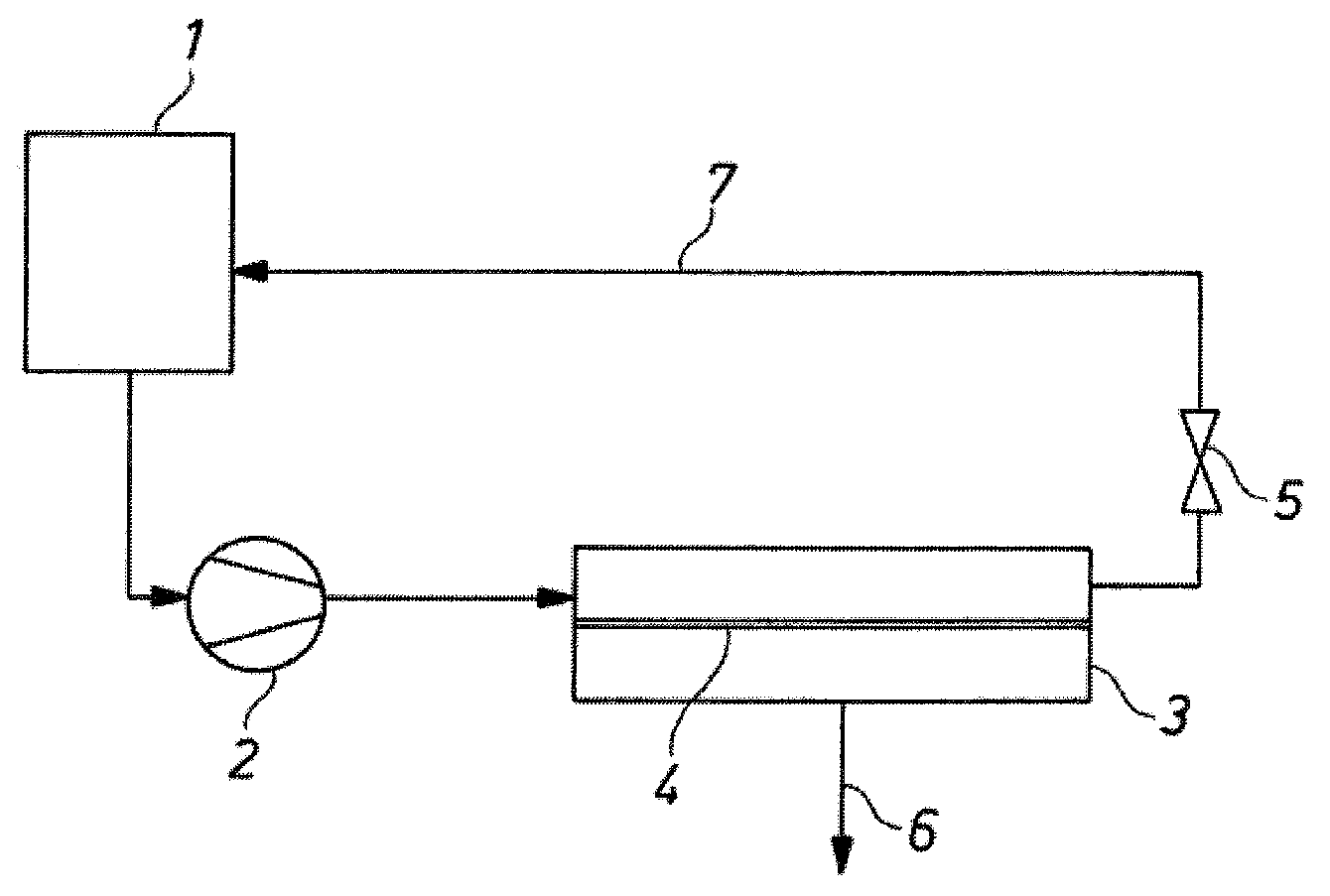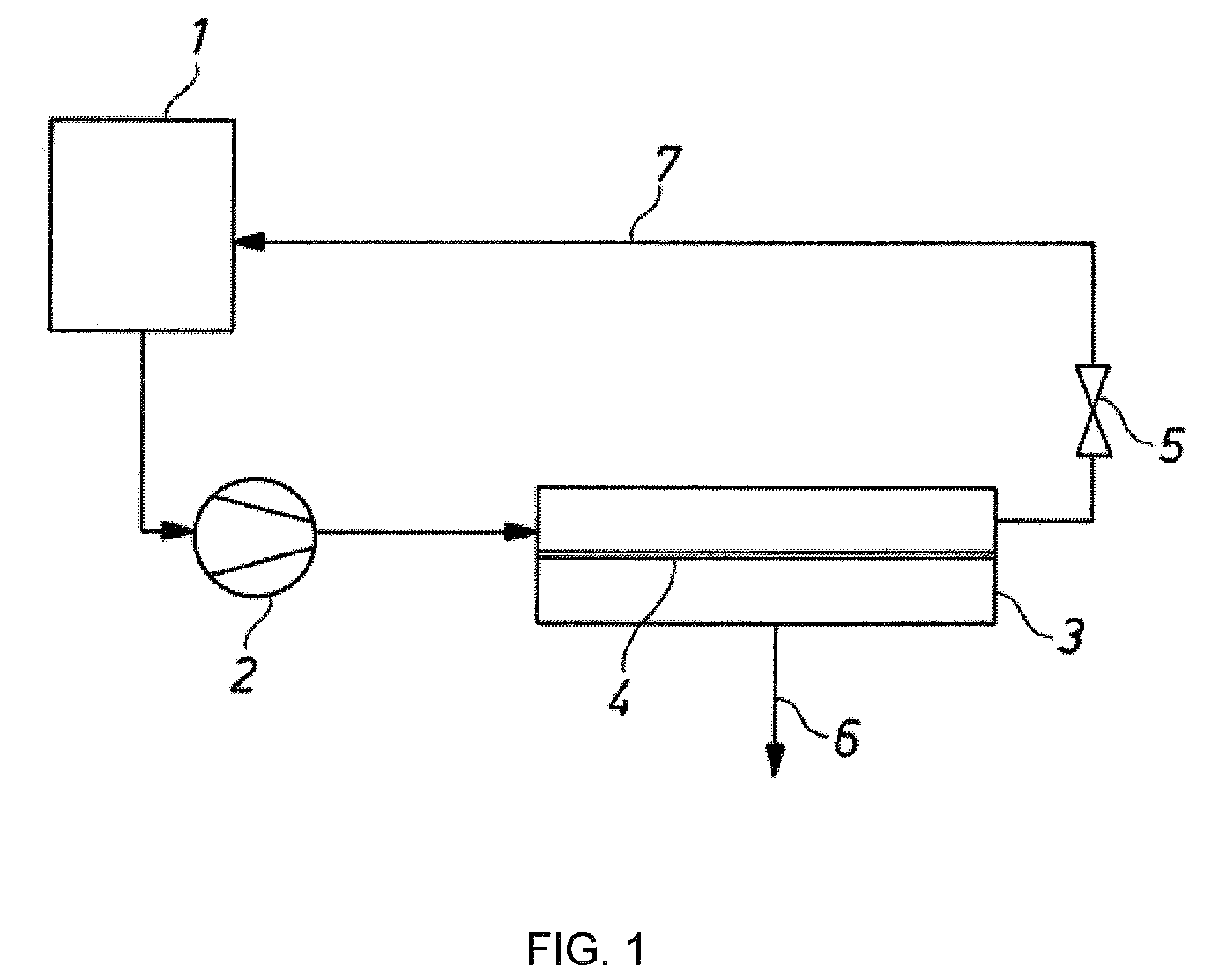Method for separating an organic phase from an electrolyte-containing aqueous and organic phase
a technology of organic phase and electrolyte, which is applied in the direction of separation process, ether preparation, filtration separation, etc., can solve the problems of large energy consumption, large energy consumption, and high cost owing, and achieve the effect of improving the separation of an electrolyte-free organic phas
- Summary
- Abstract
- Description
- Claims
- Application Information
AI Technical Summary
Benefits of technology
Problems solved by technology
Method used
Image
Examples
example 1
Production of a Hydrophobicized Sieve
[0055]An austenitic steel with the designation 1.4404 is used as the basis for production of a superhydrophobic sieve. The absolute filter unit is 5 μm (DTW 4). The metal sieve is cleaned in a 1:1 mixture consisting of ethanol and n-hexane. The surface is subsequently etched with a mixture of H2O, H2O2 and ammoniacal water at 80° C. After washing with water, coating is carried out with a 5% strength Teflon® dispersion 30-N. In order to dry the PTFE dispersion, the sieve is sintered at 320° C. for 30 minutes. The water contact angle of a mesh coated in this way is 140°±5′. This was found by measuring the so-called static contact angle of an approximately 10 μm large drop of distilled water on the mesh at room temperature.
example 2
[0056]As described in the general experimental method, a hydrophobic mesh produced according to Example 1 (sieve 06 DTW mesh width 4 to 5 μm, hydrophobicized with 5% of Teflon® N 30) is used in the test apparatus described above. The filtration surface is 0.0044 m2. A polyether polyol solution is employed (trimethylolpropane started polyether with a trifunctionality and an OH number of 45, side chains with 16% ethylene oxide units and predominantly secondary OH groups). Table 1 shows the result of the phase separation.
TABLE 1TankCrossflowTMPPermeate fluxFeedPermeate[° C.][m / s][bar][kg / m2hbar][% H2O][% H2O]78.71.50.06403.47.85.678.71.50.06375.08.15.779.01.50.07761.58.15.678.91.50.18542.98.15.679.01.50.22458.78.25.679.01.50.36265.28.15.679.31.50.36238.98.25.978.71.50.40211.98.25.9
example 3
[0057]As described in the general experimental method, a hydrophobic mesh produced according to Example 1 (sieve 06 DTW mesh width 4 to 5 μm, hydrophobicized with 5% of Teflon N 30) with a PTFE sealing edge molded in, is used in the test apparatus described above. The filtration surface is 0.0044 m2. The experiment was conducted similarly as Example 2. A polyether polyol solution is employed (product as in Example 2). Table 2 shows the result of the phase separation.
TABLE 2TankCrossflowTMPPermeate fluxFeedPermeateFeedPermeate[° C.][m / s][bar][kg / m2hbar][ppm KOH][ppm KOH][% H2O][% H2O]114.31.50.3124618260.14.04.0114.91.50.576618595.84.03.9115.51.51.046421944.24.13.8
PUM
| Property | Measurement | Unit |
|---|---|---|
| pore width | aaaaa | aaaaa |
| pore width | aaaaa | aaaaa |
| width | aaaaa | aaaaa |
Abstract
Description
Claims
Application Information
 Login to View More
Login to View More - R&D
- Intellectual Property
- Life Sciences
- Materials
- Tech Scout
- Unparalleled Data Quality
- Higher Quality Content
- 60% Fewer Hallucinations
Browse by: Latest US Patents, China's latest patents, Technical Efficacy Thesaurus, Application Domain, Technology Topic, Popular Technical Reports.
© 2025 PatSnap. All rights reserved.Legal|Privacy policy|Modern Slavery Act Transparency Statement|Sitemap|About US| Contact US: help@patsnap.com


